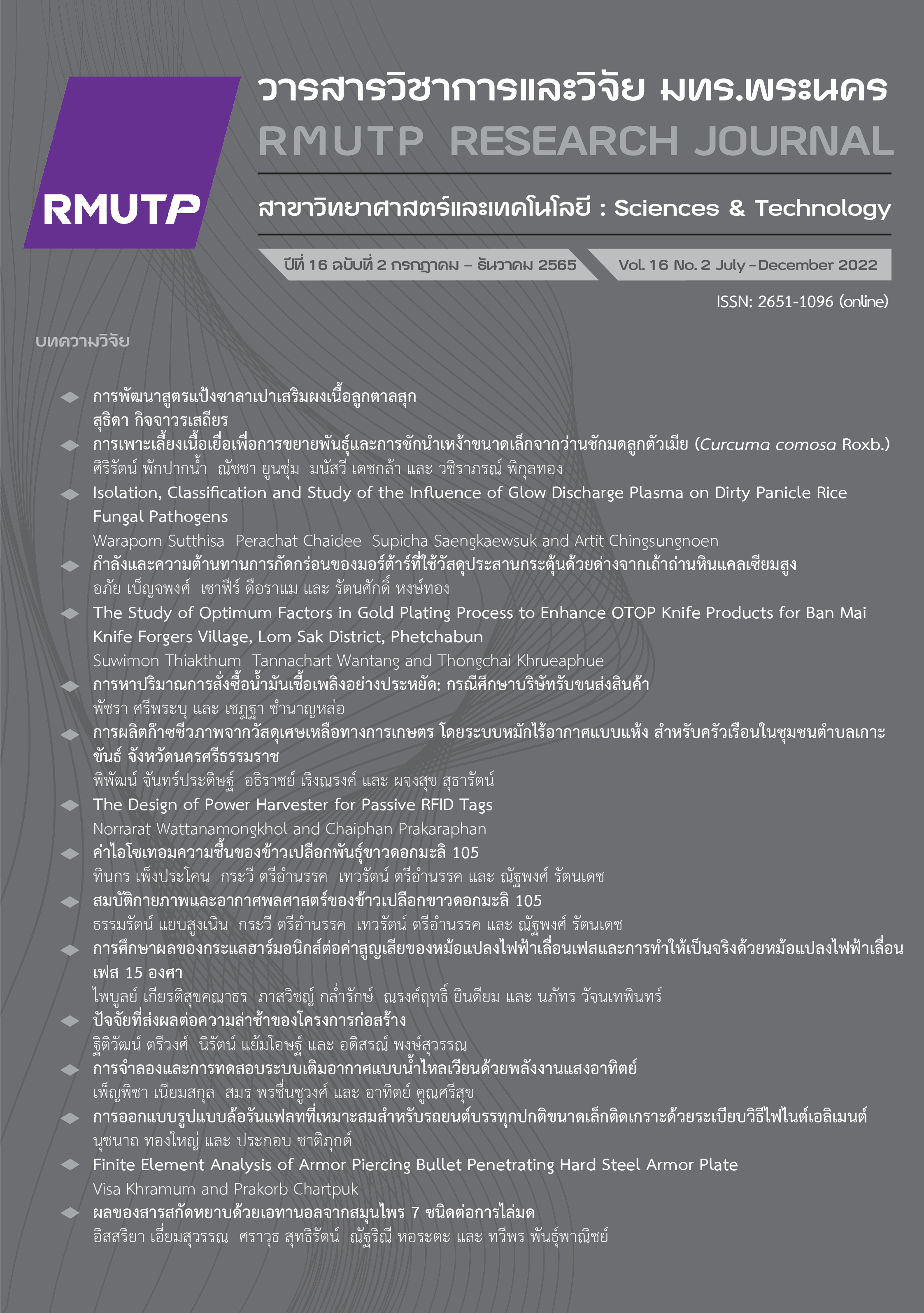Simulation and Experiment of a Solar-Circulating Aeration System
Main Article Content
Abstract
The amount of dissolved oxygen (DO) in aquaculture ponds is considered to be one of the most important aspects for the survival of fishes. The water in aquaculture ponds is stratified into distinct layers with different DO caused by differences in temperature. This temperature difference occurs when the surface layer of water, heated by the sun, becomes hotter than the lower water layer. Since the top layer is in contact with the air, it contains the most DO. On the other hand, the deepest layer is isolated from the air, it contains the lowest amount of DO. This study proposed an aeration system called a Solar Circulating-Water Aeration System (SCWAS). The SCWAS uses solar thermal energy to create a natural water circulation. In other words, it provides an upward current of water from the bottom to the pond surface and a downward current from the surface to the bottom. This circulation creates the movement of surface water and then increases the DO content of the surface water. This water circulation moves highly oxygenated surface water to the bottom layer, forcing low oxygen water from the bottom up to the surface where it can absorb oxygen. To evaluate this design concept, the numerical simulations of the system were conducted using ANSYS Fluent software. According to the simulation results, the SCWAS can provide the natural water circulation. It was found that a flow rate of 2.24 L/s is obtained when the ratio between the draft tube inlet (r), the draft tube outlet (R), the base (L) is 1: 2: 3. In addition, an SCWAS prototype was built and installed in a tilapia aquaculture system. A calibrated measuring system was installed to investigate the prototype performance. The experimental results indicate that the average DO values at the water surface and at the bottom of the pond increased by 1.45 and 1.40 times, respectively, compared with those of a pond without SCWAS. Economic analysis shows that the payback period of SCWAS is 4.58 years and its investment cost is 17.49% less than that of the paddle-wheel aerator.
Article Details

This work is licensed under a Creative Commons Attribution-NonCommercial-NoDerivatives 4.0 International License.
ลิขสิทธ์ ของมหาวิทยาลัยเทคโนโลยีราชมงคลพระนครReferences
S. D. Culberson and R. H. Piedrahita, “Aquaculture pond ecosystem model: temperature and dissolved oxygen prediction-mechanism and application,” Ecological modelling, vol. 89, no. 1-3, pp. 231-258, Aug. 1996.
A. Kumar, S. Moulick and B. C. Mal, “Selection of aerators for intensive aquacultural pond,” Aquacultural engineering, vol. 56, pp. 71-78, Sep. 2013.
L. T. Phan, T. M. Bui, T.T.T. Nquyen, G. J. Gooley and B. A. Ingram, “Current status of farming practices of striped catfish, Pangasianodon hypophthalmus in the Mekong Delta, Vietnam,” Aquaculture, vol. 296, no. 3-4, pp. 227-236, Nov. 2009.
J. Southard, (2006). Dissolved Oxygen and Water Column Stratification. [Online]. Available: http:// www.fondriest.com
A. Ali, “Oxygen regime and productivity in fish ponds,” M.S. thesis, Dept. Tech. (Aquaculture), African Regional Aquaculture Centre/Rivers State University of Science and Technology, Port Harcourt, 1986.
F. Struckmann, “Analysis of a flat-plate solar collector,” Heat and Mass Transport, Project Report, 2008MVK160. (2008).
A. Mahmoud, T. N. Quang and E Pavlov, “Development of a solar updraft aeration system for pond aquaculture in resource-constrained environments,” in Proceeding of 2015 IEEE Global Humanitarian Technology Conference (GHTC), Seattle, WA, USA, IEEE, 2015, pp. 306-313.
T. Chenvidyakarn and A. Woods, “Multiple steady states in stack ventilation,” Building and Environment, vol. 40, pp. 399-410, 2005.


